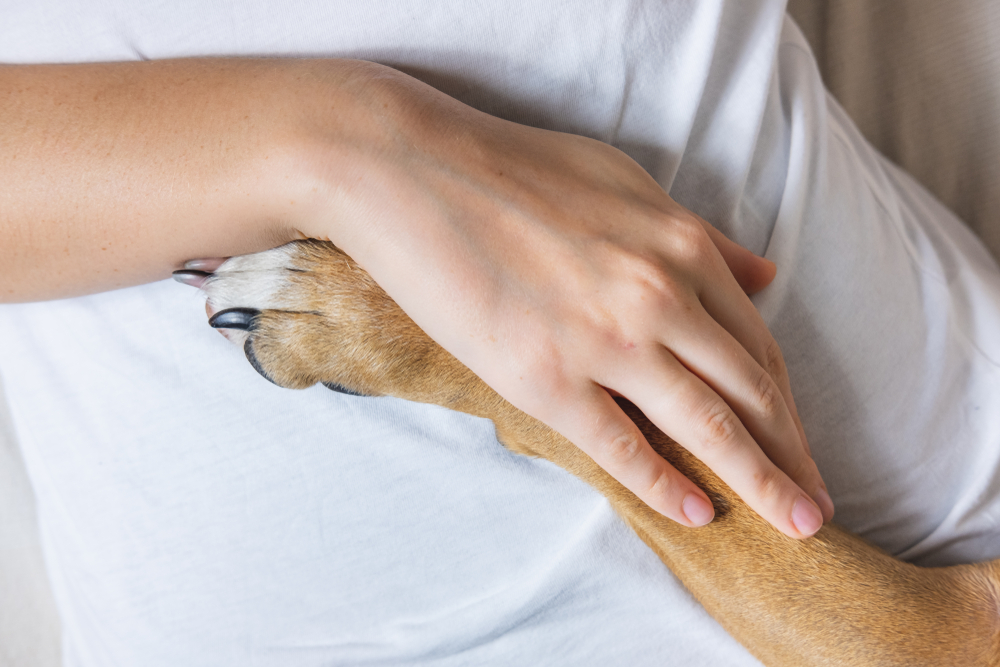
Did you know petting a dog can lower a child’s stress levels and boost their mood? Science is increasingly recognizing pets’ remarkable power to support children’s healthy development. This article explores the various benefits of pet therapy, which utilizes trained animals to improve a child’s emotional, social, cognitive, and even physical well-being. From reducing anxiety to enhancing social skills, we’ll delve into the fascinating ways pets can become furry companions on a child’s journey to growth.
Understanding Pet Therapy
Pet therapy, also known as animal-assisted therapy (AAT), utilizes trained animals to support a person’s physical, emotional, and social well-being. It’s important to distinguish pet therapy from service animals. Service animals are trained to assist individuals with disabilities in performing specific tasks, such as guiding a visually impaired person or alerting someone with a seizure. On the other hand, therapy animals provide companionship and emotional support in various settings.
Here’s a deeper dive into the world of pet therapy:
- Qualifications: Therapy animals undergo rigorous training and temperament assessments to ensure they are calm, friendly, and comfortable in various environments. Additionally, their handlers are specially trained to manage the animal during therapy sessions and ensure safety and positive interactions.
- Types of Animals Used: While dogs are the most common therapy animals due to their trainability and friendly nature, animals like cats, guinea pigs, and even horses can be used depending on the therapeutic goals and individual preferences. For instance, gentle and social cats can be calming companions for hospital children. At the same time, therapy horses can provide opportunities for physical therapy and improved balance in individuals with mobility limitations.
The human-animal bond is a powerful tool, and pet therapy capitalizes on this connection to benefit children’s development, which we’ll explore in the following sections.
Emotional Benefits
The unconditional love and calming presence of animals can profoundly impact a child’s emotional well-being. Here’s how pet therapy can nurture a child’s emotional development:
- Reduced Stress and Anxiety: Studies have shown that interacting with pets can lower children’s cortisol levels, the stress hormone. Petting a dog or cat can induce a relaxation response, lowering heart rate and blood pressure. This can be particularly beneficial for children facing stressful situations like school exams, illness, or anxiety disorders.
- Boosted Self-Esteem: The non-judgmental acceptance offered by pets can significantly enhance a child’s self-esteem. Caring for an animal fosters a sense of responsibility and accomplishment, leading to a positive self-image. Children may find it easier to confide in a furry friend without fear of criticism, further boosting their emotional well-being.
- Enhanced Empathy and Emotional Intelligence: Interacting with animals teaches children important emotional skills like empathy and compassion. By observing and responding to the animal’s emotional cues, children learn to understand and respond to the emotions of others. Additionally, caring for a pet requires nurturing and responsibility, fostering a sense of empathy and emotional intelligence.
- Providing Comfort and Security: For children facing difficult situations like illness, loss, or trauma, pets can offer a source of comfort and security. Cuddling a furry friend can provide a sense of calm and reduce feelings of loneliness and isolation. Therapy animals can be particularly helpful in hospitals or therapeutic settings, offering comfort and companionship during challenging times.
Social Benefits
The social world can be complex for children, especially those who are shy, withdrawn, or have difficulty interacting with peers. Pet therapy can be a powerful tool for fostering social development in children by providing a safe and encouraging environment for social interaction. Here’s how:
- Improved Social Skills: Pet therapy can help children develop essential social skills like communication, cooperation, and building relationships. Interacting with a therapy animal encourages conversation and turn-taking while caring for a pet fosters responsibility and teamwork. Additionally, therapy animals can act as a social bridge, helping shy children feel more comfortable initiating interactions with peers.
- Encouraging Social Integration: In settings like classrooms or therapy groups, a therapy animal can act as a social catalyst, encouraging children to engage with each other. Typically, withdrawn children may find it easier to approach and interact with a pet, which can lead to increased interactions with their peers. This can be particularly beneficial for children with social anxieties or on the autism spectrum.
- Supporting Children with Autism Spectrum Disorder (ASD): Children with ASD often experience challenges with social interaction and communication. Pet therapy can offer a unique opportunity to develop these skills in a safe and non-judgmental environment. Studies have shown that interacting with therapy animals can improve social communication, reduce anxiety in social situations, and even enhance nonverbal communication skills in children with ASD.
Cognitive Benefits
The human-animal bond goes beyond emotional comfort and can stimulate a child’s cognitive development. Here’s how interacting with therapy animals can enhance a child’s cognitive abilities:
- Stimulating Cognitive Development: Studies suggest that interacting with animals can stimulate cognitive development in children. Playing with a dog, grooming a cat, or observing a fish tank can improve memory, problem-solving skills, and overall cognitive function.
- Improved Focus and Attention: The calming presence of animals can help children focus and maintain attention for longer periods. This can be particularly beneficial for children with ADHD or other conditions that can impact focus. Interacting with a therapy animal can provide a calming outlet for excess energy, allowing children to better concentrate on tasks.
- Supporting Learning and Academic Achievement: Research suggests that pet therapy can positively impact learning and academic achievement. Studies have shown that therapy animals can improve reading skills in children, especially those who struggle with reading aloud. The presence of a non-judgmental animal companion can create a more relaxed environment, fostering a positive attitude towards learning.
Physical Benefits
The bond with a furry friend extends beyond emotional and social well-being; pet therapy can also promote a child’s physical development in several ways:
- Promoting Physical Activity: Therapy animals can be fantastic motivators for getting kids moving! Activities like walking a dog, playing fetch, or engaging in interactive games with a pet encourage children to be more physically active. This increased physical activity can improve cardiovascular health, build muscle strength, and enhance overall fitness.
- Improving Coordination and Motor Skills: Caring for a pet often involves grooming, feeding, or playing fetch. These activities can help children develop and refine fine motor skills, such as hand-eye coordination, agility, and grasping. Activities like walking a dog or playing with a ball can improve gross motor skills, such as balance, coordination, and agility.
It’s important to remember that pet therapy should be implemented with safety and supervision in mind. However, the potential benefits for a child’s physical development are undeniable.
Implementing Pet Therapy
While the benefits of pet therapy for children’s development are compelling, implementing a program requires careful planning and consideration. Here are some key factors to keep in mind:
Considerations for Implementation
- Safety: This is paramount. Therapy animals must undergo thorough temperament testing and training to ensure they are comfortable and well-behaved in various settings. Allergies and phobias of participants must also be considered. Clear guidelines and supervision protocols are essential to ensure a safe and positive experience for everyone involved.
- Matching Needs and Animals: The type of therapy animal used should be chosen based on the specific needs and preferences of the children involved. For instance, a playful dog might encourage physical activity, while a calm cat could comfort children facing anxiety.
- Qualified Professionals: Pet therapy sessions should be facilitated by trained professionals who understand child development and can guide interactions between children and the therapy animal to maximize the therapeutic benefits.
Successful Programs and Case Studies
Pet therapy programs are being implemented successfully in various settings, including schools, hospitals, and therapeutic centers. Here are some examples:
- Schools: Therapy animals can be incorporated into classrooms to create a more calming and supportive learning environment. They can also help children with social anxieties or learning difficulties.
- Hospitals: Studies have shown pet therapy can significantly reduce anxiety and improve emotional well-being in children undergoing medical treatments.
- Therapeutic Centers: Pet therapy can be a valuable tool in therapy centers for children with special needs, such as those on the autism spectrum or with behavioral challenges.
Pet therapy can be a powerful tool for nurturing a child’s overall well-being if it is carefully considered and inspired by successful programs.
Conclusion
In conclusion, the science is clear: pet therapy offers many benefits for children’s development, impacting their emotional, social, cognitive, and physical well-being. From reducing anxiety to fostering social skills, these furry companions can be powerful allies on a child’s journey to growth. If you’re considering pet therapy for a child, prioritize safety and consult with qualified professionals to ensure a positive experience. Here at (Assured Hope Health), we are passionate about promoting children’s mental health. We offer a variety of resources and support programs to help children thrive. If you or someone you know is experiencing any mental health challenges, please don’t hesitate to reach out to us. You are not

